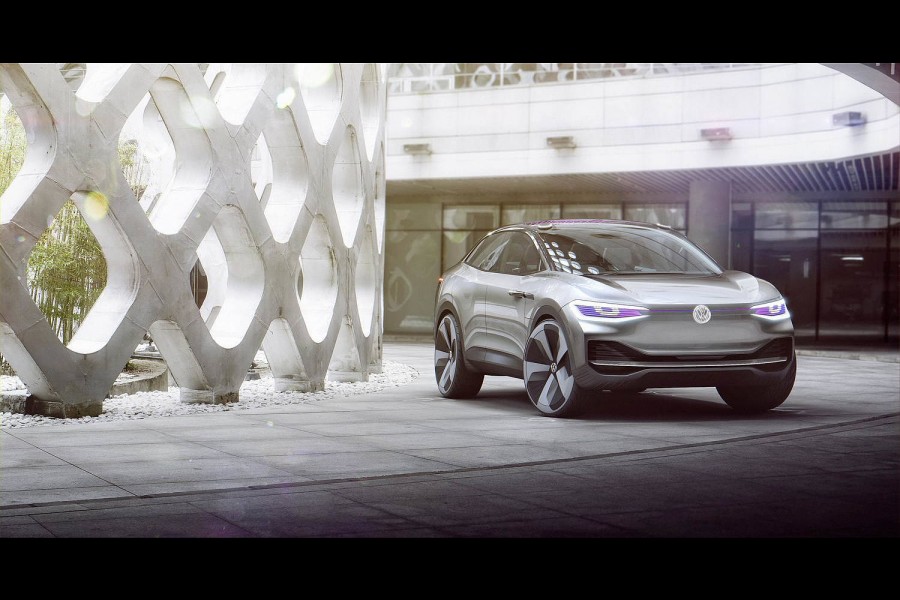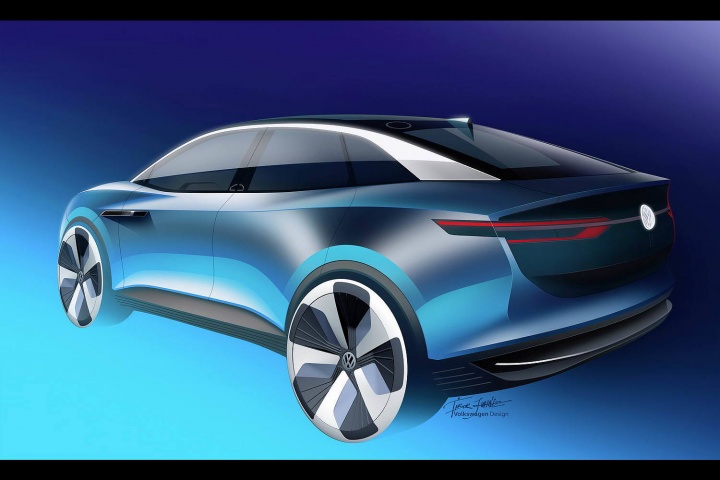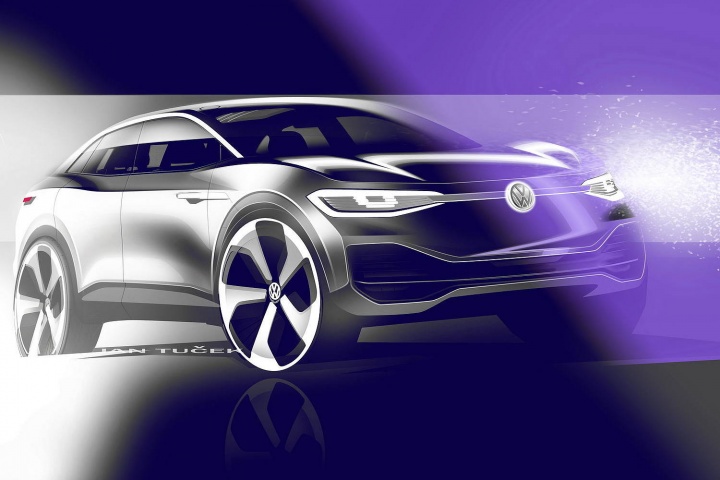What's the news?
Volkswagen wants to have its own version of the BMW 'i' brand in production very soon, with these zero-emission electric vehicles hopefully hitting the market by 2020. To that end, it has already released two concepts under the banner - the I.D. car and the I.D. Buzz microbus. And at the Auto Shanghai show this week it adds this, the self-driving Crozz SUV concept, to the fold.
Exterior
Although the I.D. Crozz is an SUV, you can't fail but to notice the sloping rear that makes it, in Volkswagen's words, a Crossover Utility Vehicle (CUV). The Crozz is based on the Modular Electric Drive Matrix (MEB) chassis, with the axles and drive system modules set far apart to provide a long wheelbase and thus plenty of room on board.
It features the same C-shaped LED daytime running lights as you'd find on anything part-electric in Volkswagen's current road-car range, like the Golf GTE, and then five thin LED strips that create electronic 'moving eyes' for the Crozz - or, more realistically, what's known as the 'Interactive Spotlight'. When the car is switched off, the front LED display goes to one single line to make it look like the car's eyes are shut. Quite.
Elsewhere, the front doors open conventionally, but the rears slide backwards to allow ingress and egress, while the concept is finished in Silver Spark paint. There are minimal shut lines at the front of the Crozz, all designed to make its bonnet and bumper look like they were 'hewn out of a single block of aluminium', while the 'VW' nose badge is illuminated. As is the one on the back, which sits in a black panel rear section bisected by thin-strip LED lights. Stuffed into the arches are some colossal, flat-dish 21-inch alloys as well. The I.D. Crozz is suitably futuristic and attention-grabbing, that's for sure.
Interior
Inside is one of those traditionally otherworldly concept-car cabins that exhibits a starkly minimalist look. There are only four seats and the sloping roof cuts into interior room, although Volkswagen says the I.D. Crozz has as much room on board as the seven-seat Tiguan Allspace it recently announced; mainly because the car's lithium-ion battery pack is mounted flat in the floor of the car to free up space. Up top is a panoramic sunroof that can be 'opened' or 'closed' using a Light Blind, activated by gesture control. This is a virtual blind that uses LED strips to lighten or darken the interior - and the exterior appearance - accordingly.
The I.D. Crozz can be driven or drive itself. Volkswagen has fitted I.D. Pilot to the car in the belief that autonomous driving out in the traffic-strewn wilds of the real world will be ratified by 2025, so the steering wheel retracts into and extends from the dashboard, according to how you want to use the SUV. In its self-piloting mode, it becomes part of the fully digitalised 5.8-inch Active Info Display of the Crozz, while there's a 10.2-inch tablet handling the main information presentation in the centre of the dash. There's also an augmented reality (AR) Head-Up Display for the driver, which is active in automatic and manual modes.
Further features include a CleanAir system to ensure quality conditions inside, no matter the smog outside the Crozz; a User-ID and Digital Key that automatically tunes the car's systems to a driver's preferences; and a Delivery Service - if you order a package and you're not at home, a courier can locate the Crozz by GPS and then is given temporary access to the 515-litre boot via an app. The owner is notified of the delivery via another app and then the boot of the car is locked with the parcel inside.
Mechanicals
The whole point of the I.D. brand is for Volkswagen to sell totally electric, zero-emission vehicles separately from the electrified cars it already has on the roads. As a result, they need good range to make them viable as daily drivers and the I.D. Crozz has just that - up to 500km on a single charge, apparently. It achieves this thanks to an 83kWh battery, which is mighty, but Volkswagen claims it only takes 30 minutes to juice back up to 80 per cent, provided you're on a 150kW direct current charger.
Motive power comes from a pair of electric motors, mounted front and back to keep weight distribution nicely balanced at 48:52 respectively. Interestingly, while the I.D. Crozz can be driven in four-wheel-drive mode all the time, in normal motoring it predominantly sends power to the rear axle. The motor there has 150kW (204hp) and 310Nm of torque, while at the nose of the Volkswagen is a smaller 102hp/140Nm item. Total system output is the sum of its parts, according to its maker, so that's 306hp and 450Nm, enough for a top speed of 180km/h; acceleration figures aren't quoted yet, but it should be pretty brisk. Suspension is by MacPherson struts front and a multilink rear, with both featuring the integrated drive system and a decoupled sub-frame.
Finally, if the driver wants to take control of the car when it's in autonomous mode, all they have to do is press the VW logo on the steering wheel, or touch the brake or accelerator pedals. If the I.D. Crozz is being driven by a human, the LED linear graphic at the front and on the roof is light blue; in autonomous mode, this switches to magenta/violet.
Anything else?
So, will the I.D. Crozz actually make it into showrooms? It would appear so. Following its debut in China, high-volume full production of Volkswagen I.D. cars should be rumbling along by the middle of the next decade. Herbert Diess, chairman of the Volkswagen's board of management, said: "By 2025, we want to have sales of pure electric vehicles up to one million units a year. The I.D. Crozz will play a key role in that. Production will start in 2020."


